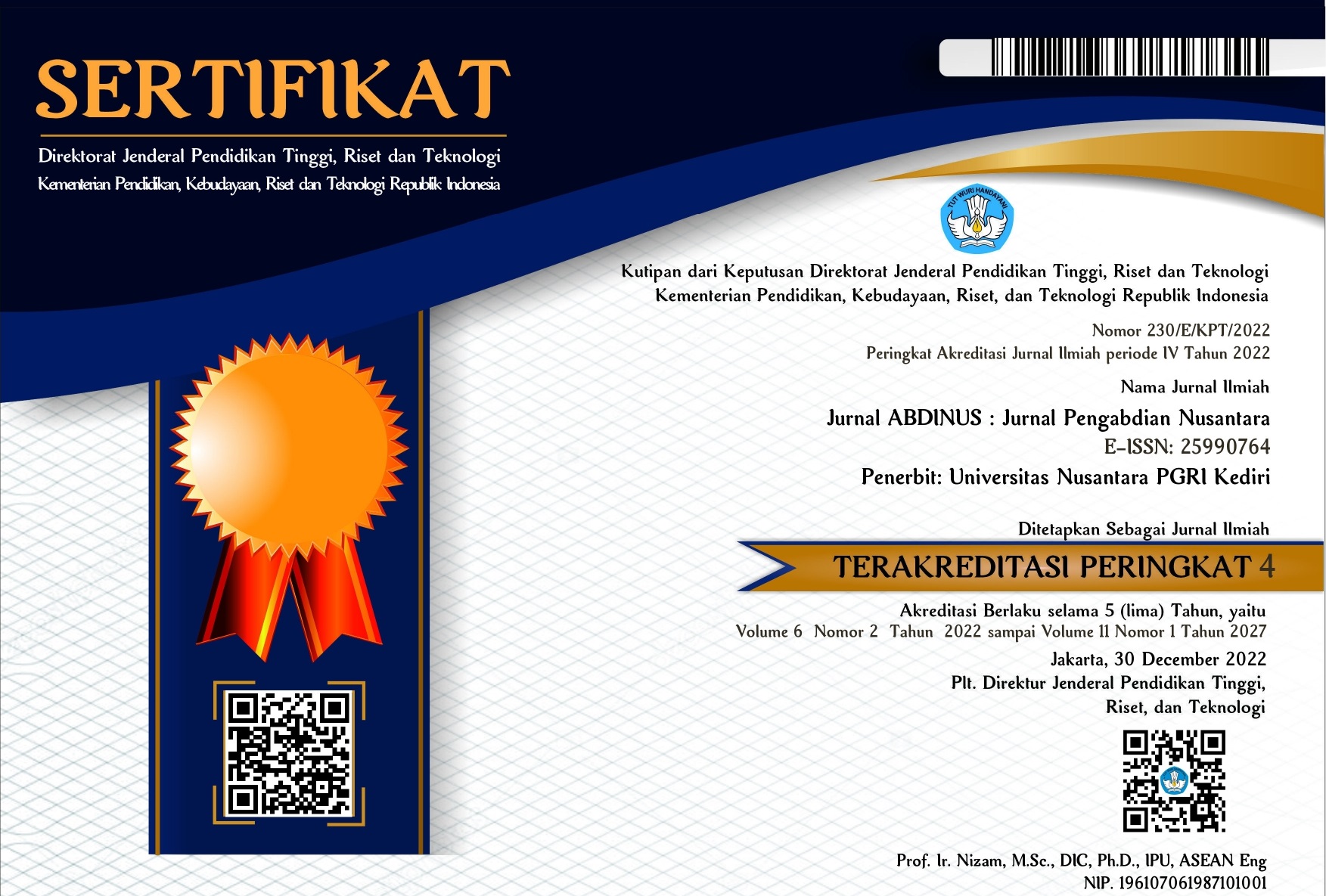Optimalisasi Desa Wisata Berbasis UMKM Melalui Destination Branding
DOI:
https://doi.org/10.29407/ja.v3i2.13727Keywords:
desa wisata, identitas, optimalisasi, destination brandingAbstract
The development of Small, Micro and Medium Enterprises (MSMEs) is one of the driving forces of the community's economy, especially in villages. Unfortunately, the potential of MSMEs scattered in this village is not yet utilized optimally by the village. Optimizing can be done in many ways, one of them by building village destination branding. The construction and design of destination branding is carried out in Gogodeso village, Blitar district which has many potential MSMEs to be developed, unfortunately not yet communicated by the local community and government optimally. Destination branding is the answer in overcoming it. The stages of destination branding development go through five steps namely market analysis, brand identity, brand recognition, brand implementation and finally launching. The process of developing video-based destination branding is part of the vision and identity of the village of Gogodeso aimed at changing the perception of the village of Gogodeso. As a result, the village's identity as a tourist village of UMKM began to be formed in the public through videos and websites that are spread and socialized in the village community.
Downloads
References
Beirman, David. (2003). Restoring Tourism destinations In a crisis, A strategic marketing approach, Allen & Unwin, Australia.
Bryan White dalam Budi Suryadi. (2006). Ekonomi Politik Modern Suatu Pengantar. Yogyakarta: IRCiSoD.
Burhan Bungin (Ed). (2001). Metodologi Penelitian Kualitatif (Aktualisasi. Metodologis ke Arah Ragam Varian Kontemporer). Jakarta: PT Raja Grafindo Persada.
Cai, A. (2002). Cooperative branding for rural destinations. Annals of Tourism Research, 29(3), 720-742.
Dewi, Made Heny Urmila, dkk. (2018). Penerapan Digital Marketing dalam Mendukung Kegiatan Pemasaran Pelaku UKM di Kabupaten Klungkung. Jurnal Pengabdian Kepada Masyarakat, 8(2), 19 – 24. Retrieved from http://ojs.uninus.ac.id/index.php/JPKM/article/view/234/pdf
Godrey, K & Clarke, J. (2000). The Tourism Development Handbook: a practical approach to planning and marketing. Burns & Oates.
Howie, F. (2003). Managing The Tourist Destination. UK: Thomson Learning.
Kartajaya, Hermawan & Yuswohady. (2005). Attracting Tourists, Traders, Investor: Strategi memasarkan Daerah. Jakarta. Penerbit Gramedia.
Moleong, Lexy J. (2007) Metodologi Penelitian Kualitatif, Penerbit PT Remaja Rosdakarya. Offset, Bandung
Morgan N, Pritchard Annette, Pride, Roger, 2004, Destination Branding: Creating the Unique Destination Proposition, second edition, Elsevier Butterworth-Heinemann, London.
Murfianti. (2010). Membangun City Branding Melalui Solo Batik Carnival. Jurnal Penelitian Senidan Budaya. Vol. 2 No.1, Juni 2010. pp. 14-20.
Pike, Steven. (2004). Destination Marketing Organization, Advance in research Tourism series, Elsevier Butterworth-Heinemann, London.
Situmorang, Syafrizal Helmi, 2007, Regional Branding, Jurnal Wahana Hijau, PWD USU, Medan.
Soedarwo, Vina. (2017). Pemberdayaan Masyarakat melalui Pendidikann nonformal berbasis Potensi Lokal dalam Membangun Desa Wisata Adat. Jurnal Sosiologi Pendidikan Humanis, 2(2), 96-102. Retrieved from http://journal2.um.ac.id/index.php/jsph/article/view/3400
Widjaja, HAW. (2008) Otonomi Desa : Merupakan Otonomi yang Asli, Bulat dan Utuh. Jakarta: PT RajaGrafindo Persada.















